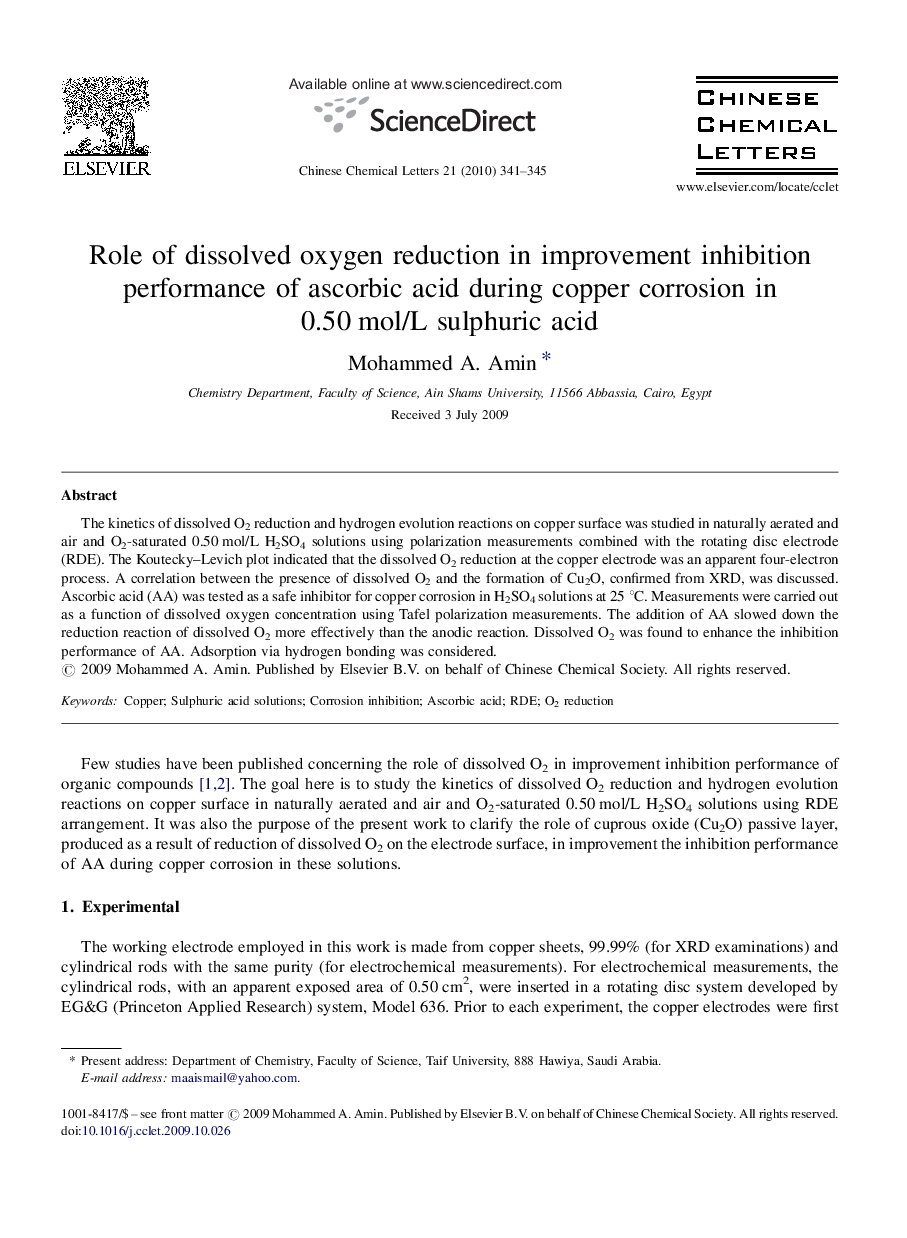| Article ID | Journal | Published Year | Pages | File Type |
|---|---|---|---|---|
| 1255977 | Chinese Chemical Letters | 2010 | 5 Pages |
The kinetics of dissolved O2 reduction and hydrogen evolution reactions on copper surface was studied in naturally aerated and air and O2-saturated 0.50 mol/L H2SO4 solutions using polarization measurements combined with the rotating disc electrode (RDE). The Koutecky–Levich plot indicated that the dissolved O2 reduction at the copper electrode was an apparent four-electron process. A correlation between the presence of dissolved O2 and the formation of Cu2O, confirmed from XRD, was discussed. Ascorbic acid (AA) was tested as a safe inhibitor for copper corrosion in H2SO4 solutions at 25 °C. Measurements were carried out as a function of dissolved oxygen concentration using Tafel polarization measurements. The addition of AA slowed down the reduction reaction of dissolved O2 more effectively than the anodic reaction. Dissolved O2 was found to enhance the inhibition performance of AA. Adsorption via hydrogen bonding was considered.
